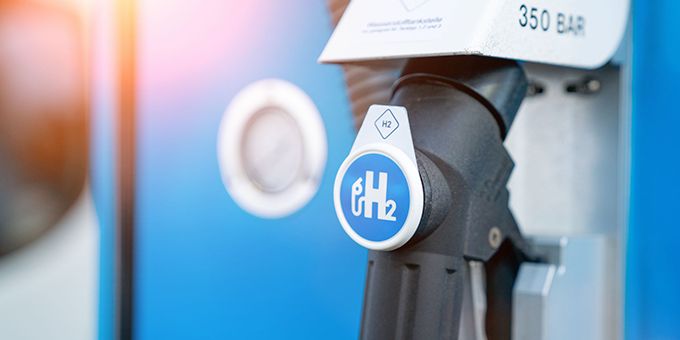Whether hydrogen fuel holds the key to delivering widespread renewable power remains under heavy debate. What cannot be argued is the shear investment that backers are putting into the energy source — as much as 470 billion euros by 2050.
 The Road to Greener Hydrogen - Hydrogen Now Isn’t Everything That Hydrogen Could Be
The Road to Greener Hydrogen - Hydrogen Now Isn’t Everything That Hydrogen Could Be

Mats W. Lundberg, Head of Sustainability | Sandvik
When sceptics protest hydrogen’s potential, as both an effective and eco-friendly fuel source, it’s important that they see the bigger picture. Mats W. Lundberg, head of sustainability at Sandvik, examines the hydrogen roadmap.
Currently, around 96 per cent of hydrogen is generated from fossil fuels. The gas is predominantly produced by reforming methane, which creates carbon dioxide (CO2). Carbon capture and storage can make this production method more sustainable, but that’s also under development.
Concentrating on where hydrogen is right now could make anyone uncertain about its future. So instead, let’s consider where hydrogen could be, and what it will take to get there.
Green, grey and blue
Hydrogen produced using fossil fuels is just one type of hydrogen — the grey variety. The three types of hydrogen refer to the different ways it can be produced. Blue hydrogen is also made using fossil fuels, but carbon capture technologies at hydrogen plants prevent CO2 from being released into the atmosphere.
The third type, green hydrogen, is the end goal for hydrogen producers, as it produces zero carbon emissions. This is because it is produced through electrolysis that’s powered by renewable resources like offshore wind. While this produces CO2, it doesn’t add any new carbon into the biosphere, and could be combined with carbon capture and storage.
Currently, producing grey hydrogen is the cheapest option and estimated costs are around 1.5 €/ kg for countries in the European Union (EU). However, there are drawbacks to grey hydrogen’s lower rate as CO2 emissions carry an increasing cost. The price of CO2 ranges from €20 to €25 per tonne, meaning that CO2 could add almost €0.50 to the price of a kilo of hydrogen, making the cost-efficiency of grey hydrogen unsustainable.
A scale-up of electrolysis could boost the feasibility of green hydrogen, increasing both its availability and cost-efficiency.
Countries across the globe are focusing on green hydrogen production. France has set a ten per cent target for green hydrogen use in industry by 2022 and the UK Government has revealed £350 million worth of funding to help decarbonise industry, including dedicated funding for green hydrogen.
The bigger picture
Another reason why sceptics may underestimate hydrogen is because they do not realise its full potential. Hydrogen could certainly replace gas to fuel our vehicles and heat our homes — but those applications are drops in an ocean of possibility.
When green hydrogen takes off, it could decarbonise industries that already rely on hydrogen. Today, around 70 million tonnes of hydrogen are produced globally, used across sectors including petrochemicals, solar panels and glass manufacturing. Selling green hydrogen into these industries, especially as its cost reduces, would automatically make them more sustainable without needing to change one of their core raw materials.
Powering the future
Green hydrogen will be critical for difficult-to-decarbonise industries, like cement, steel and glass production. For heating and powering buildings and industry, hydrogen can make use of existing assets. In particular for buildings, low concentrations of green hydrogen could be blended into public natural gas networks without any infrastructure upgrades.
Most renewables have low operating costs, meaning they have to be “always on” to be efficient, regardless of electricity demand. This means that wind turbine blades will keep turning, even if the grid doesn’t require their energy. In fact, many countries experience days where electricity prices reach negative levels due to a surplus in wind and solar supply.
The surplus of renewable energy can be used to power electrolysis, which makes use of otherwise wasted renewable energy and means that renewable operators can profit from energy that would have been a loss.
The infrastructure to build this hydrogen economy is already out there, although some investment into existing assets will still be required. Materials specialists will play a part in developing hydrogen’s infrastructure, and Sandvik is already acting to support energy companies.
Stainless steel alloy tubes, like those we can provide as part of our Mobile Services Solution, can be used to transport hydrogen from storage tanks to dispensers. The mobile service, which provides a full tubing solution in a container, is already helping one energy supplier to install several hydrogen stations using a simpler, modular method.
Hydrogen scepticism is understandable, especially when we consider our reliance on grey hydrogen. However, it’s important to recognise that today’s hydrogen is not the hydrogen of the future. New investments and developments are constantly being made, and the steps taken towards hydrogen’s decarbonisation today will certainly impact its green future.
The content & opinions in this article are the author’s and do not necessarily represent the views of AltEnergyMag
Comments (0)
This post does not have any comments. Be the first to leave a comment below.
Featured Product

